Experts from across the automotive logistics industry have sat down on the Red Sofa and shared their insights into the most pressing topics surrounding EVs and batteries. This list provides key takeaways and will be updated as more Red Sofas are released, so make sure to follow along.
The EV and battery sector has exploded in scope over the last two decades, with companies pouring record-breaking amounts of investment into the space. Galvanised by a myriad of factors – including consumer demand, decarbonisation efforts and other sustainability regulation, and a desire to innovate – OEMs have now created a landscape where EVs are commonplace on our roads and are a viable alternative for consumers traditional ICE vehicles
However, the industry has been quick to realise that EVs bring with them their own logistical challenges, especially when also factoring in batteries. From rethinking cargo flows to digitalising key processes, logistics teams have approached challenges from a variety of angles – read on for assessments and guidance from industry experts that will continue to be updated as more insights are shared.
Jump to:
- Tony Stinsa at International on the importance of considering EV design when deciding FVL
- Amy Paulsen at GM on how to ensure agility in EV logistics, even at scale
- Javier Valdez at Paccar Mexico on having a “just in case” mindset
- Monica Garcia at GM explains the benefits of being challenged in EV logistics
- Criss Edwards at Unipart on the role of 3PL players in EV FVL
- Paulo Monteiro at Volkswagen Group of America cracks the code on integrating software awareness into EV logistics
- Saba Azizi at CATL explores the benefits that digitalisation can have for the EV market
- Haley Wilson at Navistar on leveraging group dynamics in cross border EV logistics
- Oliver Bilstein at BMW outlines how plant logistics need to adapt to increased EV and battery output
- Paulina Chmielarz at JLR discusses how digital strategies can be used to combat increased regulatory complexity
Tony Stinsa at International on the importance of considering EV design when deciding FVL
The problems faced by the International team when looking at their BEV truck supply chain are indicative of the core problem faced by EV logistics teams – that is, transposing existing ICE frameworks over to EV won’t work.
Speaking at the Finished Vehicle Logistics North America conference earlier this year, Tony Stinsa, director of inbound and finished vehicle logistics at International, explained that the traditional means of transporting their Class 4-8 trucks often involves a deck-set approach, with one truck towing the rest. However, refuelling the lead truck becomes a problem when it’s an EV column as charging infrastructure is not as common as petrol stations. Similarly, Stinsa also points to EV design as also being an issue his team have faced. For one, the BEV trucks are heavier than their ICE counterparts, while the apparatus typically used to connect the truck rails can be blocked by the battery infrastructure.
Stinsa goes onto describe reactive and proactive measures that have been undertaken, and suggests that the latter should be more widely adopted. Reactive measures involve utilising existing ICE shipments, or combined shipments, to facilitate the transportation of BEV trucks. The more frequent refuelling infrastructure of the ICE trucks allows for better freight optimisation as the deck-set column is not limited to routes with charge stations. As for proactive measure, Stinsa argues that discussions on FVL need to “move way up into the development cycle”, with logistics teams being able to give feedback throughout the design process. By incorporating transportation parameters as early as possible, efficient and effective FVL can be ensured – an idea that’s worth adopting more widely.
Amy Paulsen at GM on how to ensure agility in EV logistics, even at scale
Amy Paulsen, director of finished vehicle logistics at GM, also looks at the importance of feedback and communication in the EV supply chain, and explores how the adoption of new technologies to do so can create a higher degree of flexibility.
Another common challenge in the EV logistics space is battery health and the state of charge throughout the supply chain. Paulsen states that monitoring these issues is crucial and so has introduced measures to maintain vigilance. Part of this involves an increased reliance on digital tools and quantifiable metrics. Using telematics to monitor charge throughout the battery’s journey allows the team to collect analysable data that can, in turn, be used to identify and remedy any problems – ensuring any risks are mitigated as quickly and as effectively as possible.
Paulsen also explores to the efficiency of communication and collaboration as being integral to GM’s flexibility in its EV logistics. With a network as vast as GM’s, there is a necessity to ensure that internal and external information flows are as optimised as possible, and Paulsen reveals that the secret for doing so is simply “transparency”. Sharing when there is “a plan… and problems” has facilitated a level of trust and understanding that Paulsen and her team can leverage to help mitigate any disruption. She points to the “very strong partnerships” with third party charging companies as an example of the benefits it can have in the EV space, and is a good reminder for other companies that talking to people and building relationships is key.
Javier Valdez at Paccar Mexico on having a “just in case” mindset
Speaking at ALSC Mexico 2024, Javier Valadez, director of operations at Paccar Mexico surmised that the “most expensive” thing to happen to an OEM is not having its products available. This is especially pertinent in the EV and battery space, as the landscape is very cost- and price-sensitive.
To combat this, Valdez recommends a mentality shift born out of disruption caused by the Covid pandemic – “think not only on having a just-in-time supply chain, but [the] just-in-case availability of your components.” Doing so will allow manufacturers to keep up production in the face of demand fluctuation or disruption in the flows from n-tier suppliers. He argues that it’s better to spend more on warehousing and be “a little overstocked” than lose business because of reduced production and delivery. This idea goes against the industry standard of just-in-time production and so is an interesting proposition for EV manufacturers.
He also discusses the role of international and regional legislature for EV supply chains. The USMCA agreement has been integral at reinforcing the auto trade between its three members – although, there are currently fears as to its continued success as it is up for review in 2026. However, Valdez argues that the regulations and legislature that form part of the agreement are integral in examining the “regional value” of an approach and has become a “major decision maker” in the adoption of new suppliers – a worthy reminder to any potential partner on the importance on keeping qualifications up to date.
Monica Garcia at GM explains the benefits of being challenged in EV logistics
Monica Garcia, GM’s director of global purchasing and supply chain in Mexico, also spoke at ALSC Mexico 2024. In her Red Sofa interview, she reiterated the importance of communication and collaboration with partners for EVs and batteries but approached it from a slightly different angle.
Whereas fellow Paulsen spoke about the benefits of transparent lateral and operations-focused communication, Garcia instead examines it from a more strategic standpoint. She wants GM’s partners to “challenge the way [they] are doing things” by suggesting alternatives or presenting ideas seen elsewhere in the market. In creating this discourse, “new ways of working together” can be created, which in turn can lead to improvements in network design and risk minimisation. As part of this, suppliers are encouraged to invest in innovation and take the initiative. This approach is worthwhile advice, as it strengthens the working relationships between OEMs and their suppliers, while facilitating future growth and development.
Garcia also points to “stability and continuity” as also being integral factors to effective collaboration. This can be achieved though strengthening relationships, but this is futile without delivery. With that in mind, suppliers can take solace in GM’s commitment to improving its EV and battery supply chain through nearshoring battery production. In the last year, GM has announced new plans for a new US-based battery plant, as well as unveiling a new EV and battery roadmap. This commitment to EV supply chain development sends a message to suppliers, clients and partners that stability is achievable and expected, and is the sort of message that OEMs should be encouraging if they want to strengthen their appeal to logistics partners.
Criss Edwards at Unipart on the role of 3PL players in EV FVL
The previous few Red Sofas have been great at getting the OEM perspective, but it’s also useful to learn more about how their logistics partners view the EV and battery space.
Criss Edwards, president and managing director North America at Unipart, describes there being a “massive transformation” in the automotive sector, driven by EVs, AI and autonomous vehicles, and nearshoring and localisation. Looking at EVs, he explains that one cause for this transformation is that the EV market has not grown in a “straight line” – rather, it’s been a “very dynamic situation”. A lower percentage market share growth for EVs compared to OEM expectations has led to manufacturers having to move away from set plans and adjust. “OEMs will have to manage… two independent, in-parallel supply chains” in response, one for ICE vehicles and one for EVs.
He goes onto to discuss the role that 3PLs can play in helping to manage this problem. They can leverage their networks and assets to make changes at speed, adjusting their cargo flows to meet OEM needs at that time. This expands beyond freight flows and is applicable to warehousing and storage. Edwards explains that both EVs and ICE vehicles are at risk of becoming slow-moving inventory depending on market demand at the time, becoming lost revenue for OEMs. 3PLs can utilise inventory forecasting and replenishment tool help counteract this, pivoting stock allocation to match demand. By working with 3PL, OEMs can ensure their supply chain maintains “flexibility, predictability [and] reliability” in the face of volatile markets and fluctuating EV demand – especially useful as uncertainty seems to be on the rise.
Paulo Monteiro at Volkswagen Group of America cracks the code on integrating software awareness into EV logistics
One recurring discussion point surrounding EVs that has been present for years is the concern around the software inside the car. Awareness of the coding creating this software is something that OEMs should also factor into their logistics network from the very start of the car’s production, explains Paulo Monteiro, head of Logistics, VW Group of America Chattanooga Operations, at ALSC Mexico 2024.
As the Chattanooga plant has diversified its output, the electronic complexity of the models has increased – the Passat had “about 30 modules”, the Atlas “jumped to about 90 modules”, and the currently produced ID.4 has “over 150”, which translates to “100 million lines of code”. This amount of coding is a monumental task in and of itself, but any issues can have serious knock-on impacts for logistics. Monteiro explains that each module must have the same generation, or the car will not start. Each module therefore needs to be verified ahead of production, leading to “additional difficulty” in processes.
However, now that processes are in place to check validity, these can be shared with other plants within the Group. Monteiro points to this level of collaboration and communication as being integral to the success of EV production and logistics. A standardised platform allows the Chattanooga plant to access parts using the entirety of the Group’s global supply chain. Doing so improves resiliency in the supply chain, as it facilitates increased flexibility, with Monteiro using a recent example of the plant bringing over parts from Europe after a domestic supplier couldn’t meet demand. A situation that could have been disastrous for the plant was negated by the global part accessibility afforded by a standardised strategy.
Saba Azizi at CATL explores the benefits that digitalisation can have for the EV market
Like most facets of the automotive industry, operations surrounding EVs and batteries have become increasingly digitalised. Speaking at Automotive Logistics and Supply Chain Digital Strategies Europe last year, Saba Azizi, overseas service network and development manager for CATL, discussed how carmakers can best leverage digitalisation in EV aftermarket logistics.
With a market share as significant as CATL’s, a core driver for continued success is keeping customers “satisfied, happy and loyal” and Azizi explains that digitalising the battery-maker’s service network platform has allowed them to achieve these targets. In creating an accessible hub for all the information surrounding services, including partner management details and technician certification, CATL can offer its customers a “consistent and transparent service.” This is especially pertinent as, although there may be increasing uncertainty surrounding EV markets, CATL are heavily investing in new battery production facilities across the world in response to increasingly regional production efforts. Considering these factors, increasing digitalisation in EV and battery operations is a useful means of maintaining efficiency and effectiveness.
Another useful lesson from Azizi’s Red Sofa is that the human side of logistics planning should never be forgotten. She promotes creating teams where everyone has a “different background or perspective” to ensure that there is a diversity in ideas. Creating this sort of environment allows for better “creativity and adaptability” in the face of uncertainty and a changing automotive landscape, bringing value to this important reminder.
Haley Wilson at Navistar on leveraging group dynamics in cross border EV logistics
Haley Wilson, logistics director at Navistar, sat down on the Red Sofa at ALSC Mexico last year at a time when Navistar had recently joined the Volkswagen Group of America. As such, her interview focuses on how an individual company can best utilise its sister companies and wider Group network to improve operational efficiency.
For one, Wilson describes the ability to tap into the wider Groups’ experience in producing and shipping EV models as “very helpful”, as it allows the company to identify issues that have already been encountered and create best practices to counter them without having to commit to lengthy trial-and-error or analysis procedures themselves. By adopting strategies that have worked for other companies in the Group, they can adapt to and overcome common challenges at speed. Like with increased digitalisation, this can be very beneficial for EV producers as regional flows and established production routes are in flux.
Similarly, Wilson also points to the increased supplier and logistics networks that come with being in a Group as being a significant advantage. She uses the example of Navistar leveraging fellow Traton Group member Scania to establish a cargo flow from their European hubs to Navistar’s US-based site. Such opportunities can be crucial at maintaining a solid cargo flow, and so the example acts a good reminder on the importance of communication between sister companies.
Oliver Bilstein at BMW outlines how plant logistics need to adapt to increased EV and battery output
Oliver Bilstein, vice-president of production control, logistics and material control at BMW Manufacturing in the US, sat down on the Red Sofa and explained how the BMW Spartanburg plant is adapting to increased electrification.
Part of this involves planning new logistics flows including inbound and outbound, but it also involves designing mature control processes for new components. This is an area that can be critical in introducing EV lines. As Monteiro outlined in his Red Sofa, there needs to be a holistic approach to parts production and assembly to avoid any late-stage crises. By planning these processes from the ground up, while also considering how they can be balanced alongside ongoing production lines, OEMs can ensure that planned EV expansion is carried out effectively.
For the Spartanburg plant, one approach to maintaining in-plant efficiency in the face of expansion and electrification is using automation – autonomous systems from the “building bricks” in Bilstein’s strategy to “bring logistics to the next level”. Such systems run through a centralised data hub which allows the team to teach and assign them new tasks with relative ease, facilitating quicker and smoother adaptation to new processes. While not every EV and battery plant might not have access to such systems, it is worth investigating their application.
Paulina Chmielarz at JLR discusses how digital strategies can be used to combat increased regulatory complexity
Paulina Chmielarz, director of Digital & Innovation at JLR, sits down on the Red Sofa and explains how increased electrification plays into JLR’s wider ‘Reimagine’ strategy, and discusses how such a shift requires a different approach to traditional ICE vehicle logistics.
She reflects that the traceability of traditional ICE engines through the value chain is “quite stable”, with established processes and regulations. For EVs, however, the regulations surrounding are much more granular – “it’s not tracing serial numbers through the supply chain, it’s tracing serial numbers of each weld and each cell.” Such an increase in monitoring has taken some adjustment, but Chmielarz points to technology as a means to achieve this watchfulness.
A common avenue for this is using AI for predicting and forecasting, but Chmierlarz presents an alternative approach that could be quite beneficial. She instead asks if AI software can help “literally relive yesterday”, using it to recreate scenarios where disruption may have occurred but not all the data needed for an analysis is available. Using AI to plug the gaps of missing information allows increased for increased analysis and “proper problem solving”. This approach is less common that future-looking AI uses, such as forecasting tools, but can offer valuable insight for both OEMs and LSPs, and so should be more widely considered.
In summary
The Red Sofas presented in this list offer a wide breadth of information, but there a few key themes to take away:
- Take a holistic view of production and shipping: More than with ICE vehicles, logistics need to be a consideration throughout the design and assembly stages, so companies should make sure there is strong dialogue between internal teams as early and as frequently as possible.
- Adopt new technology and digital strategies where possible: As vehicles become more software-defined, so too should the processes that surround them. From automation in plants to AI forecasting tools, adopting digital tools can help maintain operational efficiency in the face of EV-related challenges.
- Carry over learnings from ICE logistics but build from the ground up if necessary: Don’t just ignore the teachings of decades of building and transporting ICE vehicles, leverage the same principles where possible. But, at the same time, the different characteristics of EVs may require new or specialised processes to be introduced.
- Effective collaboration and communication are crucial: Both internally and externally, companies should ensure that lines of communication are kept open and efficient. Increased regulation and transport challenges for EVs can lead to a higher risk of disruption, so keeping all parties involved and aware can be vital at mitigating any problems.
Despite uncertainty from some commentators, the EV market will likely continue to grow, as will expertise in the field. Check back again to see how this list evolves as more leading voices sit down on the Red Sofa.



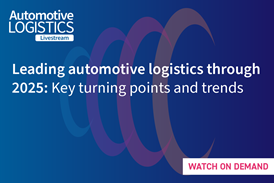


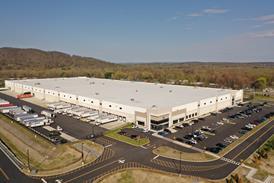
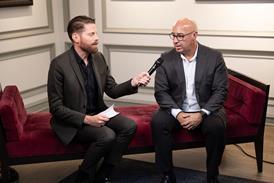
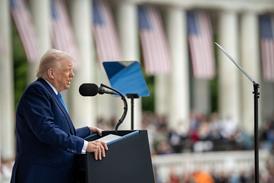
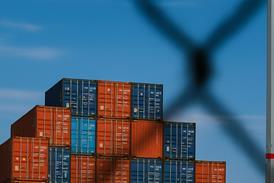
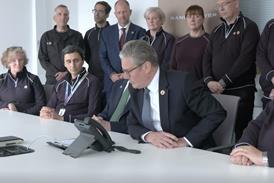

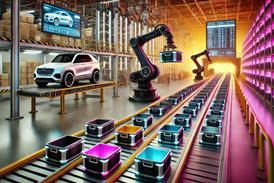
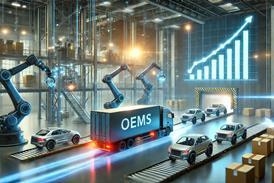
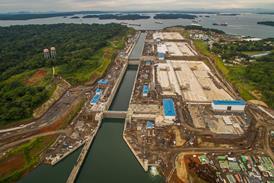

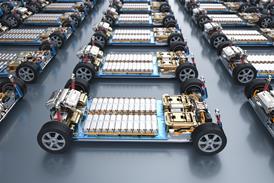



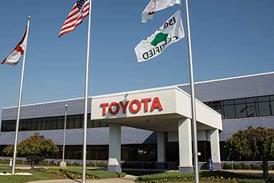



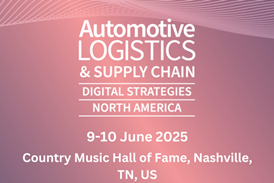
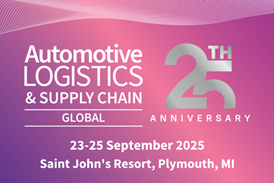
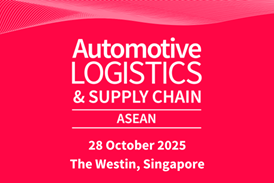
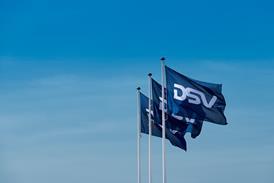

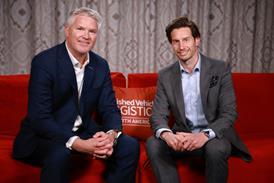
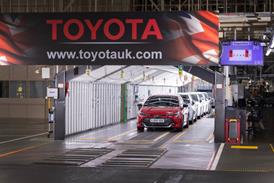


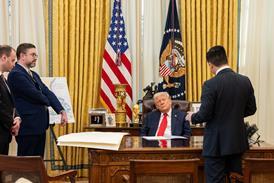
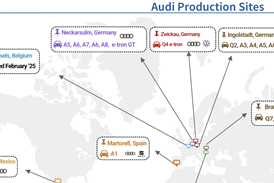
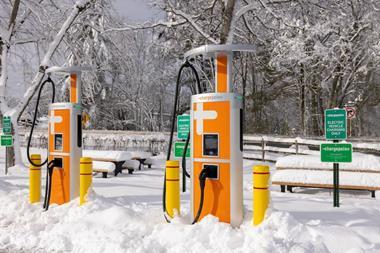


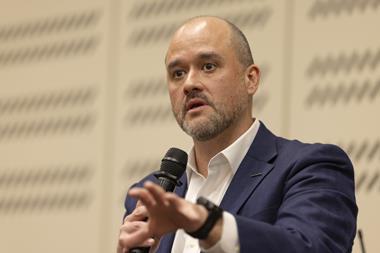
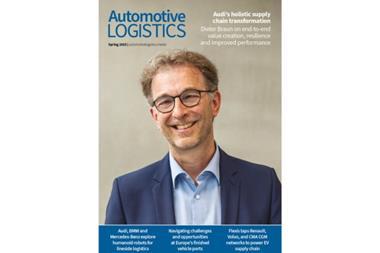
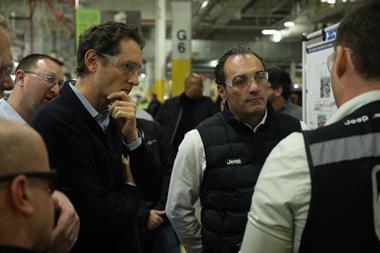



No comments yet